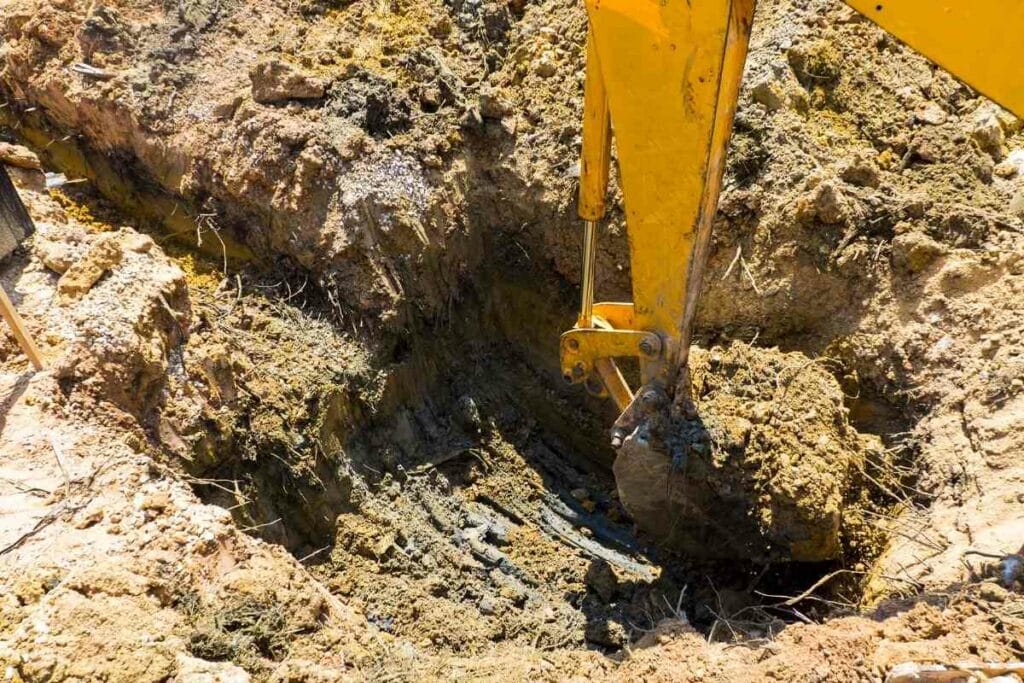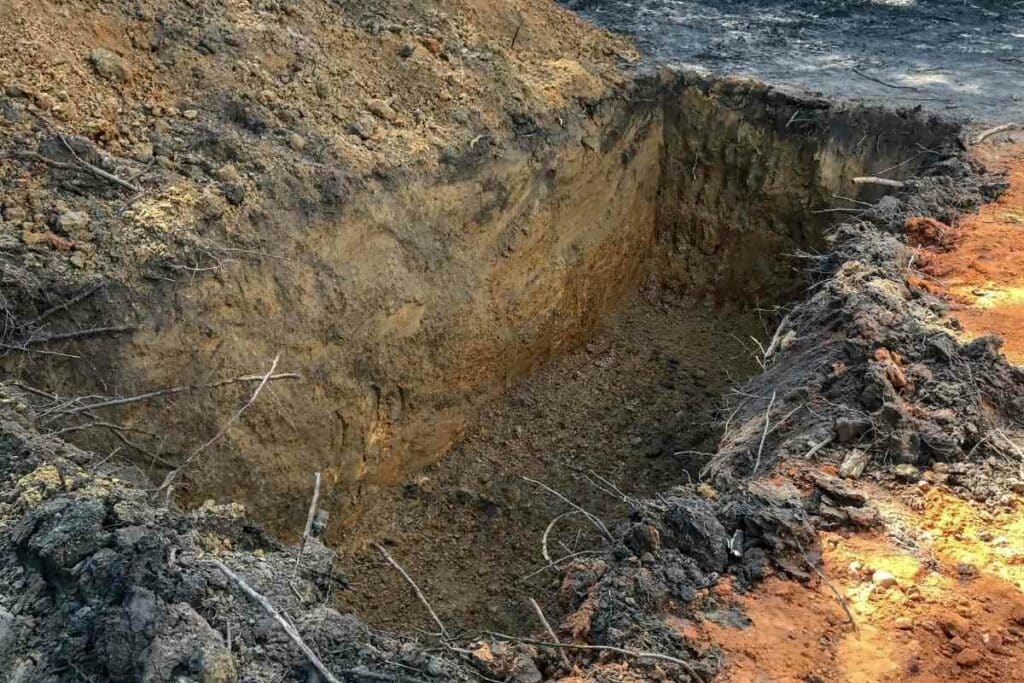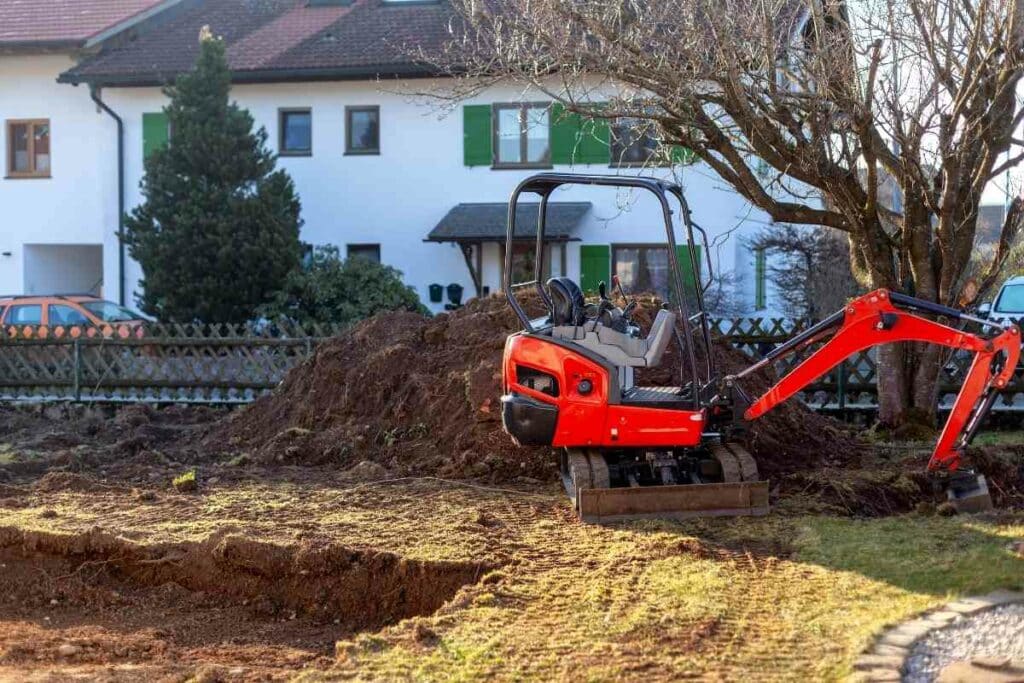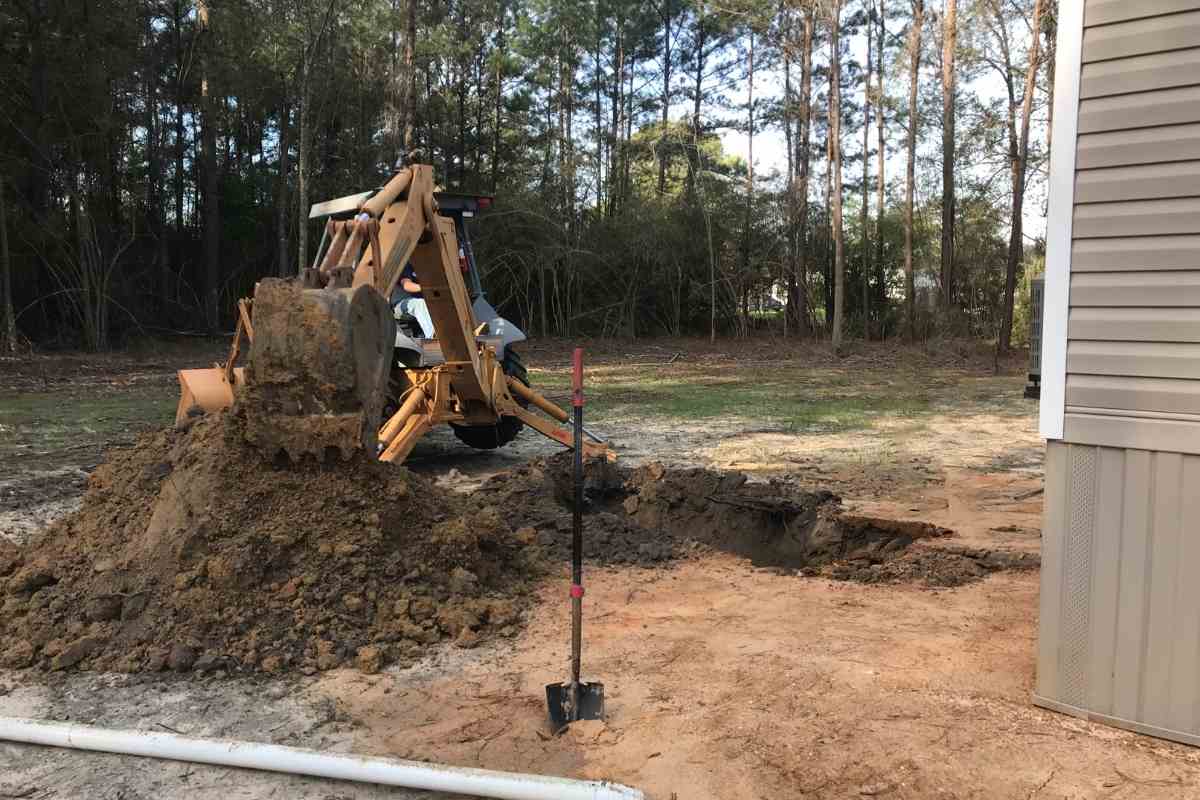Digging holes for a new fence, plants, or a well can be costly and challenging.
If you want to erect a new fence, plant trees in your yard, digging holes is the most challenging task.
However, you can do it faster and with less strain, if you learn a few tricks about the job.
In Most Cases – The best way of digging a hole in your backyard is by using a powered tool. This is because machines make work easier and faster than humans.
However, you might need to use your hands if you live in regions with clay soils or rocky surfaces, as these conditions aren’t favorable for motorized equipment.
Read to discover the various methods of digging holes in your backyard.
Using a shovel
Post-hole shovels are different from standard models.
They are narrow and have a rounded tip to make digging easier.
On the other hand, regular shovels are wide, making them ineffective at digging deep holes.
Moreover, post-hole shovels have an ergonomic design that reduces muscle strain when digging.
Using a manual post-hole digger
Manual post-hole diggers are more efficient than specialized shovels.
They have two handles and blades and look like a giant pair of scissors.
To use a manual digger, push it into the ground and pull the handles apart.
Use the scissor-action manual post-hole digger if you live in a rocky region. For deeper and narrower holes, double-pivot diggers work best.
Using a powered post-hole digger
As mentioned earlier, use gas-powered Post-hole diggers if you need many holes within a short time.
These have a motor that drives a drill bit into the ground, displacing soil and digging holes.
For best results, use a two-person digger since it’s more powerful and causes less strain.
Using mini excavators and skid steers
Like powered augers, mini excavators and steers are mechanized solutions for digging holes.

However, they are faster and more efficient, making them ideal for larger projects such as fencing your entire garden.
On the Downside – Excavators and steers are expensive to hire.
Steps to Digging Holes in Your Backyard
Here are the steps to follow when digging holes in your backyard.
Inform local authorities
Before anything, call the local government to establish whether digging holes is safe.
The authorities will assess your yard to see if there are underground utilities, such as water and gas pipes, electrical wiring, etc.
You can proceed with your project if your yard has no underground utilities.
Wait for dry conditions
It isn’t easy to dig holes on rainy days.
If you’re scooping deep, the rainwater will pool inside the hole, preventing you from going deeper into the ground.
Moreover, the wetness compacts the soil, making it difficult to dig.
Mark an outline
If you intend to dig deep holes, mark its outline.
This gives an outlook of the amount of space the hole will take.
It’s easy to miscalculate how big the finished hole will be if you don’t draw and outline.
When spraying the outline, don’t skimp on size. It’s often better to have a slightly bigger hole than a tiny one.
If digging several holes, use a string along the area you intend to cover.
This ensures that you dig the holes in a straight line at equal intervals.
Gather the required tools
The equipment types depend on the size and type of holes you want to dig.
Regardless, it would be best to have a shovel to remove dirt from the hole.
You will also need:
- digging bars
- clamshell diggers
- or power augers

Although bigger tools are often more efficient, they don’t work for everyone.
So instead, go for equipment that’s suitable for your body size.
For Instance – Using a huge powered drill doesn’t make sense if you’re slender. It will do the work, but you’re likely to tire quickly.
Use powered equipment (if possible)
Hand digging is cumbersome. It’s why you need power tools if the condition allows.
On the other hand, machines are more efficient and cover large areas quickly.
However, powered tools have limitations. For instance, powered augers are ineffective for digging holes in clay soils or rocky areas.
In clay soils, a shovel is better than a motorized auger. Likewise, clamshell diggers are more efficient in rocky regions.
The high cost of hiring powered tools makes them unfeasible for small projects.
Hand digging is more economical if you need a few holes.
What To Do After Digging A Hole
Digging deep holes involves displacing large piles of soil.
Nobody wants a mound of dirt in their yard because it’s unattractive and can harbor rodents and other destructive animals.
Here are some clever tips for disposing of the displaced soil.
Spread it over your garden
The first place to dispose of your soil should be your garden.

Then, if you live in an area prone to erosion, use the dirt to replace the lost soil and fill up the gullies.
You can also use the soil for landscaping, especially if some yard sections have uneven terrain.
Give it to neighbors
If you still have too much soil after landscaping and mending your garden, consider giving it to your neighbors.
Advertise in local communities to see if there’s someone in need of the soil. This way, you get rid of a problem while helping another person.
Send the soil to a landfill
Lastly, you can send your soil to a landfill.
However, the soil must be free of contaminants and meet the minimum sanitary regulations set by the local government.
You can get this information from your nearest town hall or municipal offices.
It’s worth noting that some landfills charge a fee to accept your soil.
Wrapping Up
The ease of digging holes depends on the soil type and equipment.
For regular, loose dirt, machines are faster and more efficient.
However, using your hands to dig through clay and rocks would be best.
Whatever you do, ensure that you dispose of the displaced dirt correctly. Leaving it at the sites makes it messy.
Even worse, it could turn into a harbor for destructive rodents, like rats and moles.
